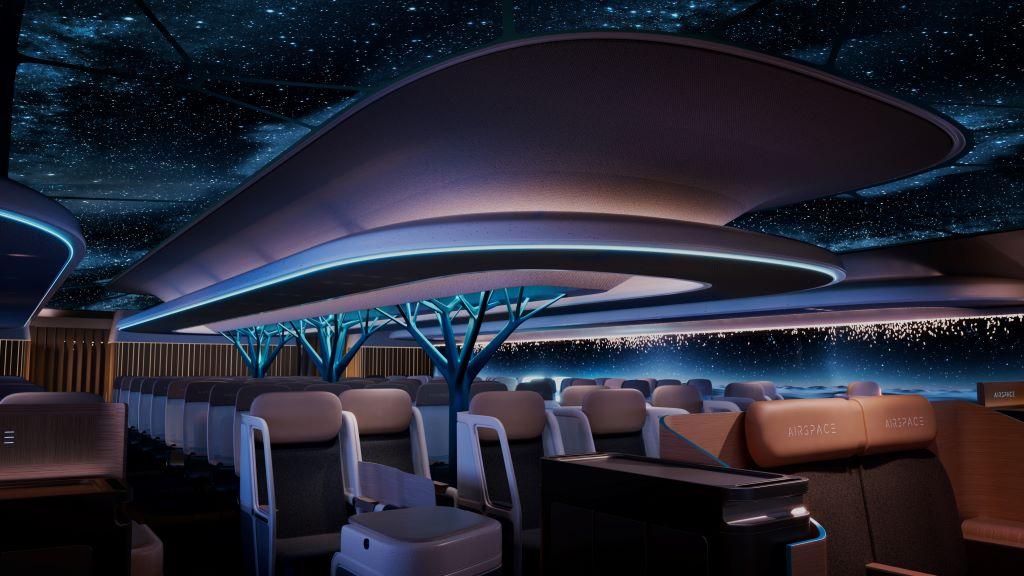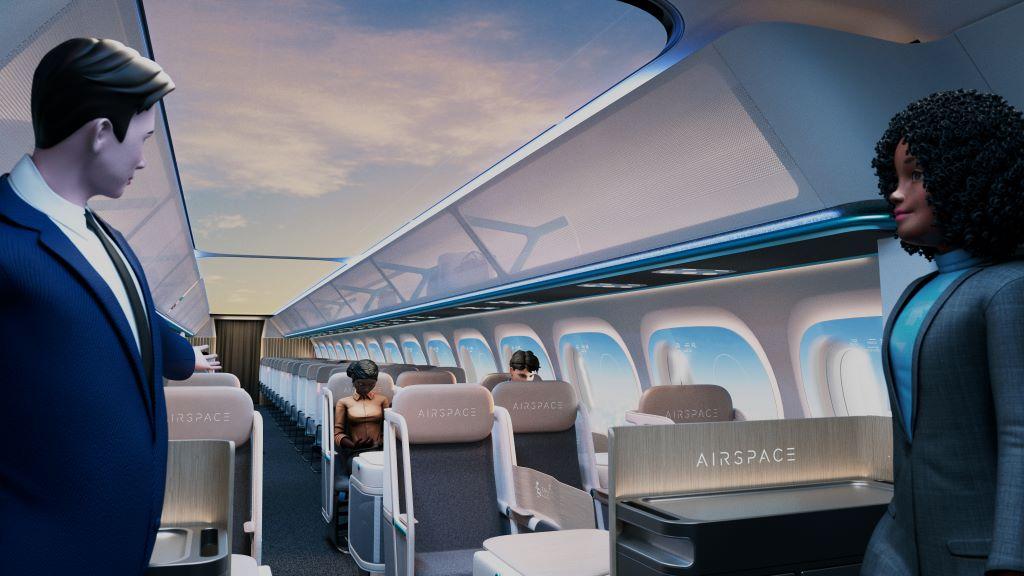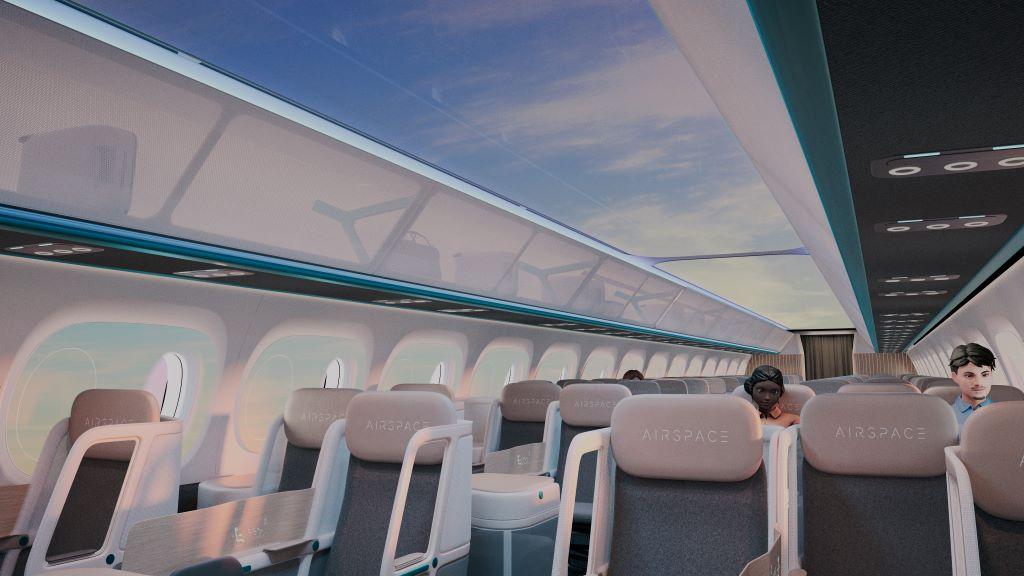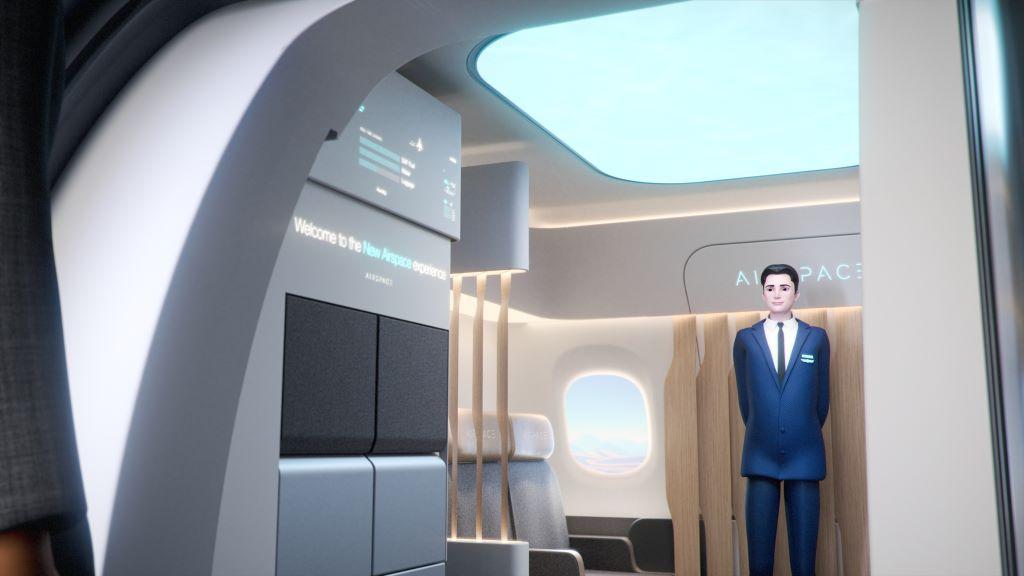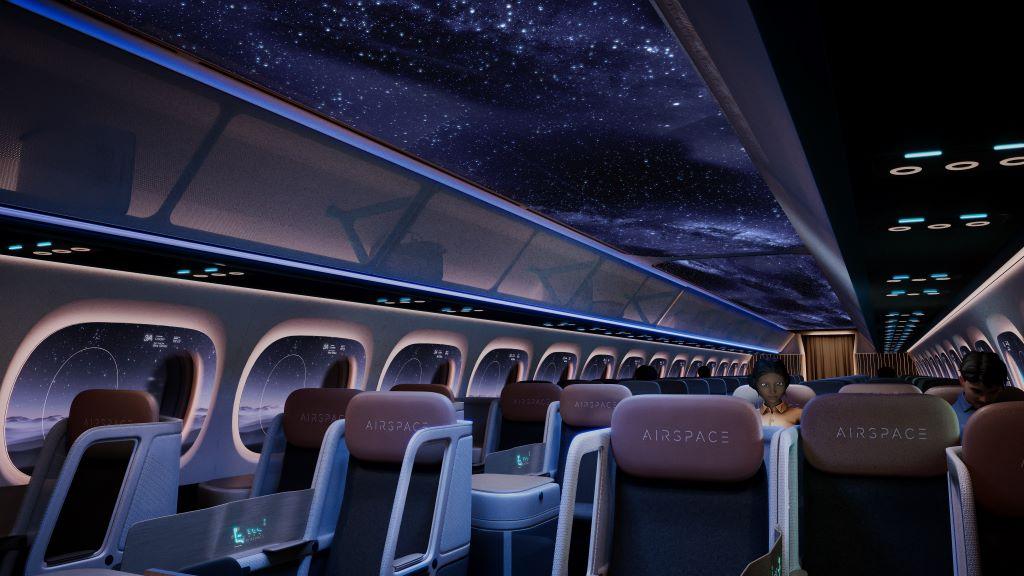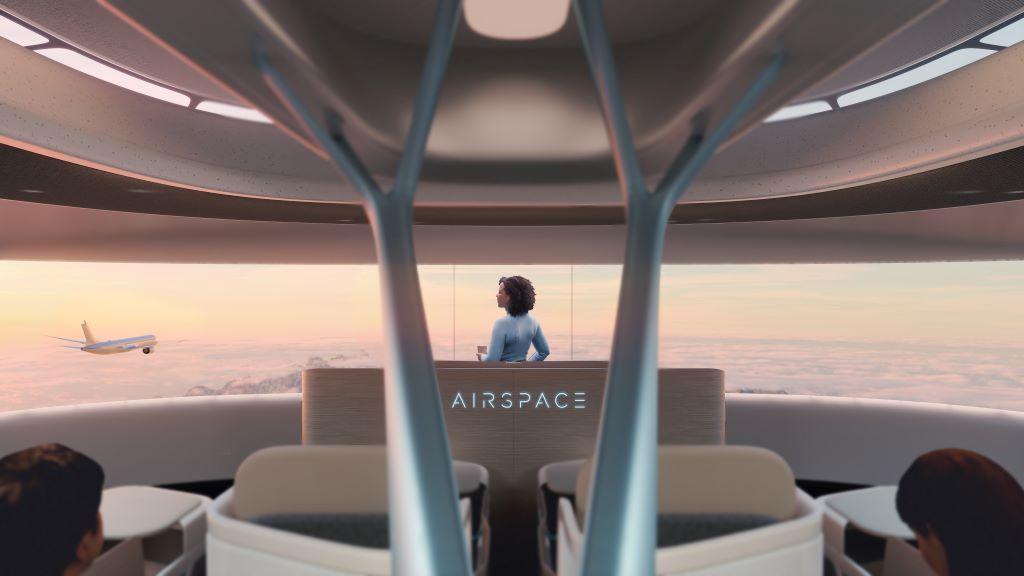Airbus’ latest futuristic cabin-design ideas, Airspace Cabin Vision 2035+, are focused on sustainability and include bionic design, reusable materials, more transparent passenger information and new catering concepts. The designs were introduced on a May 29 webinar, with more to be revealed at the Aircraft Interiors Expo in Hamburg, Germany, in early June 2023.
The 2023 update includes input from 10 airlines, including Latvian carrier airBaltic, Air New Zealand, Condor, Delta Air Lines, Etihad, Iberia, Japan Airlines (JAL), Lufthansa, and Scandinavian Airlines (SAS), as well as representatives from BMW, Siemans, SAP, and some startup companies.
All renderings by Airbus
